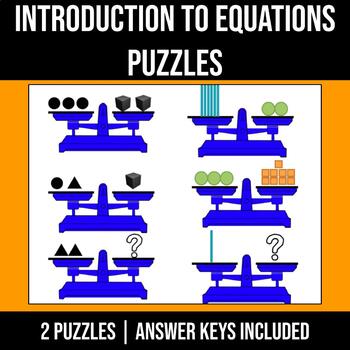Intro to Equations Activity | Balance Puzzle | Find the Missing Piece
- PDF
Description
Use this puzzle to introduce your algebra equations unit! Help students understand that each side of the balance must remain equal. Get students talking about math & explaining their ideas & methods of solving! There are so many different ways to reason!
2 puzzles & answer key are included
`*`*`*`*`*`*`*`*`*`*`*`*`*`*`*`*`*`*`*`*`*`*`*`*`*`*`*`*`*`*`*`*`*`*`*`*`*`
Click HERE to follow my store - be the first to know about new products, sales, and freebies!
*`*`*`*`*`*`*`*`*`*`*`*`*`*`*`*`*`*`*`*`*`*`*`*`*`*`*`*`*`*`*`*`*`*`*`*`*`*`
Did you know you can earn TPT credits to use toward future purchases by leaving a review? Simply go to your My Purchases page, click on the leave a review link next to the product, and give your feedback. Each time you leave feedback, TPT gives you credits to lower the cost of your future purchases! You might be surprised by how many free credits you have!
Your feedback means the world to me - I'd love to know how you & your students liked the resource. Each time someone buys a resource, I know I'm helping to make an impact in another classroom. Thank you! :)




